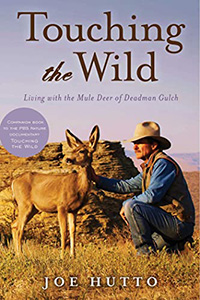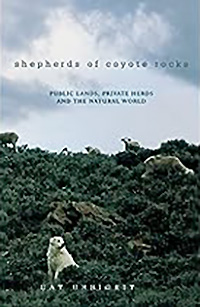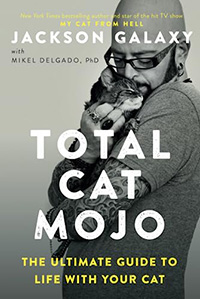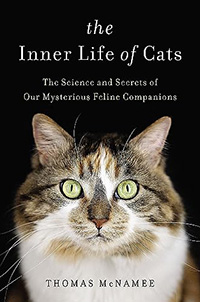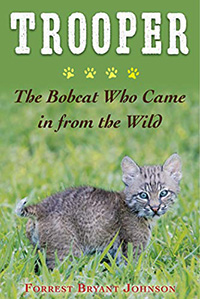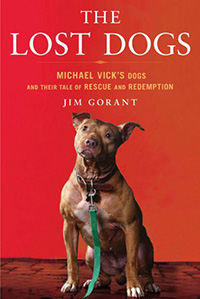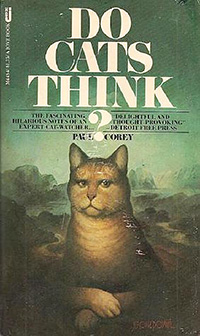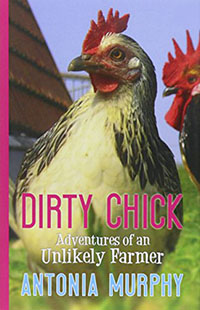I knew about this guy because I watched his documentary film about living with wild turkeys a few years ago- and have really been wanting to read his book about that experience (Illumination in the Flatwoods) ever since. I should have known he worked with more species, not just turkeys. His list of close contact wildlife studies includes bighorn sheep, wood ducks, elk, gray foxes and many others. I hoped for more books on those, but can’t find any (though I assume he’s written reports).
Touching the Wild is about his study on a mule deer herd in Wyoming. The deer had their winter range on part of his ranch, so he and his wife easily observed them up close. And then one day, a single doe started hanging out in his yard near the house, showing little fear of humans. She was there so often they gave her a name, and she soon accepted food they offered. The other deer saw that she was unharmed and started to come closer to the house too, so before long they could recognize many individuals. They gave them all names, and started keeping track of how the deer were related to each other, which one had new fawns, who got injured or sick, which had dominant status, and so on. All that is chronicled in the bulk of this book- a saga of the deer through seven years. Their personalities are distinct, and their stories are individual. Some seem to meet with bad luck from the start- loose their mother as a fawn, struggle with hunger and illness, loose their own fawns as an adult, meet with terrible injury from barbed wire or mountain lion attacks, and on and on. A lot of suffering detailed. But also very close and tender moments, as some of the deer became so trusting they would allow the author to groom them with his hands, or sit near them while they were in labor! Other individuals remained suspicious and would never let him approach (and he always respected that). This man had been a hunter, but now after knowing the deer as individuals he found their deaths hard to take and tried to protect them, feeding orphaned fawns even though he knew fewer than half would survive, supplementing winter feed when the deer had a difficult time, etc. He never intervened to patch up injuries or administer medications though.
I liked this book but also felt a little disappointed in it. It has a lot of effusive writing- not flowery per se, but full of descriptions with long words- example- ” Learning and transmitting knowledge from one generation to the next is a fundamental tenet of culture and is distinguished from those social systems that are defined by the instinctive obligations of genetically defined social behavior” – and expressing over and over a very emotional connection to the deer. He kept saying how much he learned from the deer, how they revealed the secrets of their lives to him, but I never got a good sense of what that was. What secrets of their behavior did he uncover? It wasn’t until the final chapters that there was actual information about the mule deer lives outside of their social interactions in his yard- how they compete with other cervid species for habitat, how many predators threaten them, how their physiology and behavior is so different from the white-tail. Honestly I found this section more interesting, that I was actually learning something from it- and there wasn’t enough of that.
Most telling was all his explanations of mule deer population declines, and his theories on the underlying causes. The prevalence of predators again (wolves and mountain lions), the number of human hunters (allowed to take does and fawns as well as bucks), the low ratio of female fawns (which no one can really explain), and for some reason the deer seem to be having trouble getting enough nutrition from their summer range. I had never heard of the effects of acid rain on plant life in mountain regions- but I went to read more about it after this book, and yes it seems to be a real problem- it’s complicated but basically it changes the chemical composition of the soil which binds up selenium so the wildlife ends up with deficiencies which leads to disease. It’s troubling that I looked up more about mule deer in Wyoming, and it seems their numbers are still in decline. And yet hunters are still allowed to buy permits to take does and fawns- the main thing this author argued against.
A mule deer is a creature that is wide awake on this planet, and I feel safe in saying that the human organism by comparison is a creature asleep at the wheel. The human brain is developed around a highly complex, language-based representational system, and we are proficient at collecting and organizing large quantities of information, but there appears to be little correlation between the acquisition and accumulation of these vast amounts of information and the achievement and expression of a corresponding wisdom. It must be bound up in the complexity of the human brain, but, ironically, we are creatures who find it exceedingly difficult to simply pay attention.
Borrowed from the public library. The book has many good photographs. I’m now inclined to look for the corresponding documentary film.
